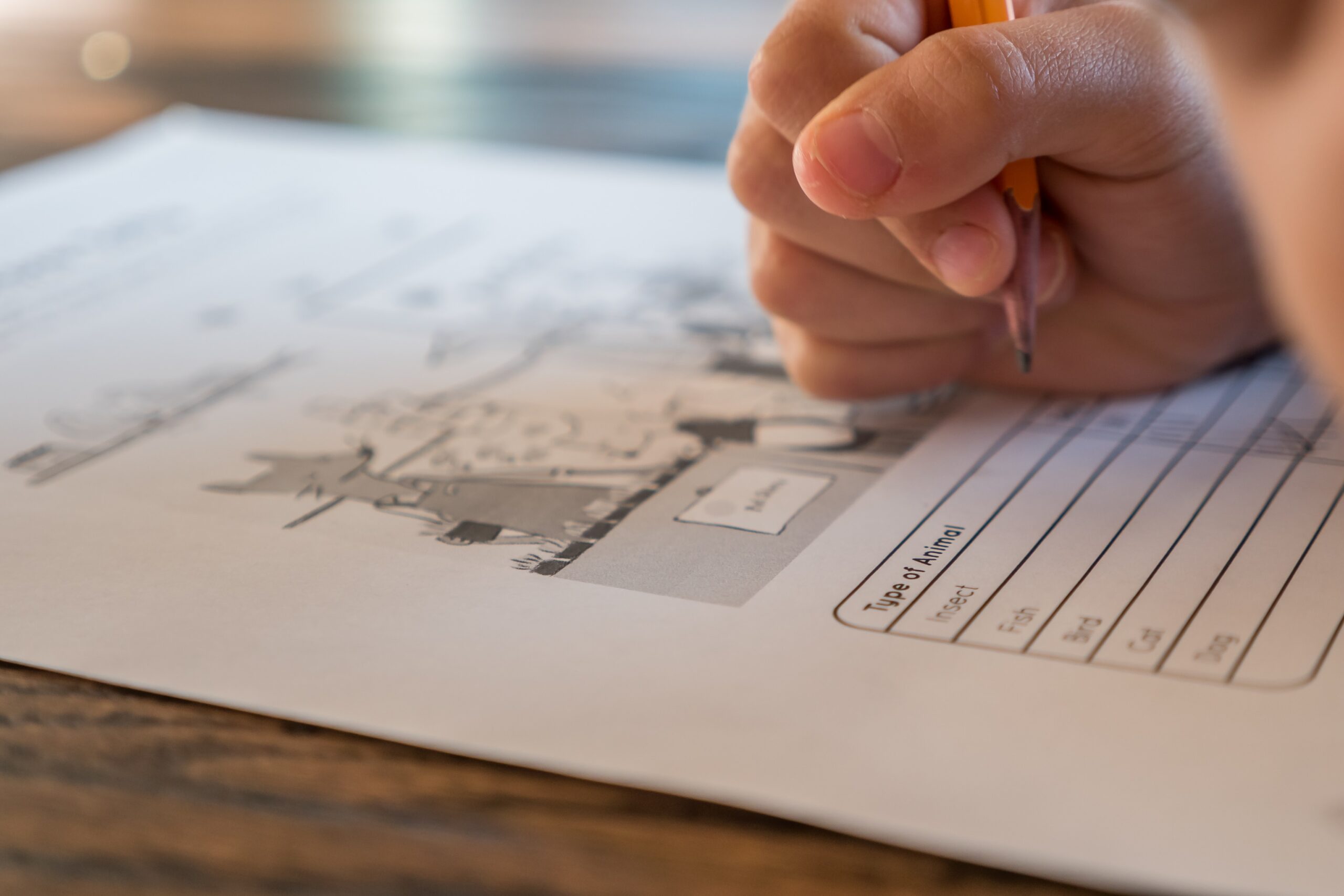
When school and motivation align, it works. When they don’t, it doesn’t (Photo: Pexels)
PART I: THE PROBLEM
Before Hurricane Katrina in August of 2005, New Orleans public schools were already underwater–fraud, corruption, contract scams, and theft plagued the system; between 2002 and 2005, over $70 million in federal money was unaccounted for. Academically, they had also earned the reputation as one of the worst school systems in the entire United States–less than half of eighth grade students were proficient in math and English.
The destruction from Hurricane Katrina gave Orleans Parish School Board (OPSB) an opportunity to redesign the school system from the ground up. New Orleans became the first major city in the United States without any traditional public schools.“Public” education in New Orleans is controlled by a charter system, rather than being directly controlled by the parish school board; each school is run by a non-profit organization that is granted a 5-year charter from either the city or the state. Charter schools can set their own curriculum and hire staff, but they must meet academic and financial requirements in order to operate and apply for charter renewal. As the years went on after Katrina, OPSB was directly in charge of fewer and fewer schools, but it wasn’t until July 2019 that the district handed over the last traditional public school, McDonogh 35, to a non-profit.
The charter system creates large discrepancies between schools because of a lack of oversight and uniformity that comes with a traditional system. The 72 schools in New Orleans are controlled by nearly 3 dozen different non-profit organizations, meaning that while some schools are thriving, others are falling through the cracks and their students are suffering. Benjamin Franklin High School and Lusher Charter School (both which require rigorous admissions testing) are ranked #1 and #4 in Louisiana, respectively, while McDonogh 35 Senior Highschool (which requires no admission testing), located in the Gentilly neighborhood, barely makes it into the top 200. Nationally, Benjamin Franklin ranks #54, McDonogh 35 falls somewhere around 17,000. The demographics of these schools are also widely different – at Ben Franklin and Lusher, 25% and 15% of students are economically disadvantaged, whereas 76% of students are McDonogh 35 fall into this category.
The typically accepted path of education in the United States includes K-12 education, high school graduation, four years of college, then entering the workforce or continuing on to higher education; however, this is not a feasible path for many American students, especially those in failing public schools. At McDonogh 35, the average graduation rate is 85%, about 9 percent higher than the state average; however, the average ACT score is only 16, two points lower than the state average and 11 points lower than the average at Lusher, which boasts a graduation rate of over 95%. Although the graduation rate at McDonogh 35 is above the state average, it doesn’t mean much when the students are graduating without the test scores and education they will need to be successful.
That being said, college is not for everyone; New Orleans’ college entry rate is 61%, the graduation rate is only 33.7%, yet so much pressure is placed on students to perform to impress college admissions offices with their test scores, GPAs, and activities. An intense focus on college prep in public high schools invalidates the goals of students who don’t want to follow a traditional path, whether they want to attend vocational school, enlist in the military, or go straight into the workforce.

What if we rethink the definition of education? (Photo: Pexels)
PART II: THE SOLUTION
Like New Orleans, New York City is known as a cultural melting pot, but its school system is incomparable to New Orleans. Less than 3 miles away from Yankee Stadium lies the brainchild of SCO Family of Services and NYC Department of Education. Bronx Arena High School is a part of a New York City education initiative started in 2010 called Innovation Zone, or iZone; iZone schools focus on personalized learning. Bronx Arena High School is most specifically focused on students who have dropped out of high school or fallen behind for another reason. The student body at Bronx Arena is small–only about 200 students total with a 10:1 student-faculty ratio, divided into “arenas” of 25 students each – allowing teachers the ability to guide each student through their personalized curriculum and specifically adjust to their needs. Low student-teacher ratios are especially beneficial to students with low levels of academic attainment. Studies have shown students who have been in smaller classes for at least three years have had higher standardized test scores, more meaningful feedback on long form work, such as English essays, greater hands-on education, and a more positive classroom morale than their peers in larger classrooms. Although low student-teacher ratios are ideal, in many schools, it is not feasible due to teacher shortages related to certification requirements, experience, and salary that affect school districts nationwide.
If one were to walk into a classroom at Bronx Arena, they would see 25 students working on 25 seemingly different things some of whom may even be playing computer games or piddling on their phones. Students are working through a self-paced customized curriculum on their laptops and teachers are available to fill in gaps and aid students when needed. Students set learning goals, choose coursework, participate in paid internships, and manage their own schedules, mimicking environments they will experience in college and the workforce, where teachers will not be breathing down their necks to get off their phones or get a project done. Unlike traditional schools, Bronx Arena does not have a strict attendance policy; since the curriculum is self-guided, missing a day of school doesn’t mean missing a class, but it does mean that students must be responsible for completing their course work to not fall behind. However, the flexibility of the curriculum especially gives leeway to students who have jobs or the responsibility of caring for younger siblings or their own children.
The autonomy students are given in the classroom translates into lessons and skills that are valuable long after graduation. Individualized learning allows students to make independent learning choices and see the consequences of their decisions, promoting trial-and-error learning from experience. Additionally, classroom autonomy fosters emotional intelligence which helps
students in building relationships and social interactions. Self-guided education also encourages students to feel responsible and motivated because they are in charge of the outcome, which is especially important for high school students who have numerous adult responsibilities outside of school and do not want to be treated like children in educational environments, which can be discouraging.
About 2.5 million, or 6.5 percent, of students between the ages of 16 and 24 have dropped out of school without earning a high school diploma or its equivalent. Dropping out of high school not only has negative repercussions on students, but on taxpayers as well. It is estimated that a typical high school dropout costs taxpayers nearly $300,000 over their lifetime due to costs of incarceration and social services–both of which high school dropouts are more likely to come in contact with than students who have earned a diploma. The education model followed by Bronx Arena is more expensive than traditional public education, cost per pupil at Bronx Arena is approximately $28,472, compared to the statewide average of $22,835. Aside from receiving state funding to cover the costs per public, Bronx Arena also receives federal funding from the Every Student Succeeds Act, which focuses on funding schools with large populations of economically disadvantaged students–89% of Bronx Arena students fall into this category. While the $6,000 difference in cost is far less than the $300,000, it is a yearly up-front cost, compared to the $300,000, which is costs dispersed over the lifetimes of each high school drop out.
The Innovation Zone initiative is changing the learning experience for students throughout New York City by personalizing the curriculum and encouraging students to set academic, personal, and professional goals and to follow through with them. Over 20,000 middle and high school students are participating in the iZone initiative and have improved their study skills and communication abilities thanks to the program. The program is only 10 years old, so it is still fairly new, making long-term statistics difficult to find. In iZone’s first year (2011-2012), the program had an 80% retention rate and 86% of teachers have reported that they have seen success in students’ ability to “self regulate” their learning.
PART III: IMPLEMENTATION
Public schools in New Orleans do not focus on individual students; rather, they focus on “teaching to the test” and overhauling the curriculum with ACT test prep and statewide standardized testing. While ACT prep courses are beneficial to students with college aspirations, they are essentially useless to students who will be attending vocational schools or enlisting in the military post-graduation. At Bronx Arena, it does not matter what a student’s plan is after they earn their diploma, all that matters is that they make a plan while they are still receiving support from teachers and counselors and are dedicated to fulfilling their goals. Implementing an online, self-guided curriculum in New Orleans is possible, especially following the COVID-19 pandemic, which has shown the possibilities and feasibility of online learning and launched platforms like Zoom and Google Classroom into the mainstream, so schools already have the infrastructure required to facilitate online education.

How do we not teach to the test? (Photo: Pexels)
However, it would be difficult to achieve a 10:1 student-teacher ratio in New Orleans. The average student-ratio across Orleans Parish is 18.9:1, meaning over 200 teachers would have to be hired to accommodate the current student population. In October 2021, New Orleans was granted $14.3 million from the Department of Education to specifically address teacher retention. 27 schools will be allocated funding from this grant and can choose how they use it. Public school teachers in New Orleans earn about $51,000 annually and are required to have at least a bachelor’s degree and Louisiana teaching certification. The rising costs of education compared with low salaries contribute to the teacher shortage by making it difficult to weigh the costs and benefits of becoming a teacher. Incentives for teachers, such as a program that promises to pay off student loans for teachers could be implemented to address the shortage and reduce the student-teacher ratio.
Orleans Parish does not have to rely solely on federal and state education funding; instead, it can take a more creative approach by taking advantage of the music, restaurant, and tourism industries in the city and create partnerships where percentages of sales directly benefit public education and teacher retention; this would be a grassroots effort to improve public schools and pick up slack where OPSB, Louisiana, and the federal government have failed its students.
As seen in New York City, criticism of implementing a program like iZone and creating a school like Bronx Arena in New Orleans would likely be based on finances. Funding for school charters in New Orleans is already spread extremely thin, and many teachers in Orleans Parish are overworked and underpaid. In 2017-2018, New Orleans public schools spent, on average, $13,455 per pupil–statewide, average per pupil expenditures were $11,669. These numbers are less than half of the expenditures of Bronx Arena, but education is worth investing in.
Investing in education leads to a more equitable society, more secure futures for millions of students, greater innovation, and a stronger workforce so it is a disservice to the city of New Orleans and its residents to allow thousands of students to be failed by the public education system–especially those who are economically disadvantaged and have no other choice. 83% of students in Orleans Parish public schools are economically disadvantaged and 90% are minorities. The iZone specifically targets students in these high-risk groups, so based on the demographics of Orleans Parish schools, a program like iZone would allow educators to tailor their classrooms more specifically to the needs of the students, rather than creating a blanket curriculum that will not work for everyone–and frankly, is not working for anyone–in the system.
Works Cited
Federal Student Aid, studentaid.gov/manage-loans/forgiveness-cancellation/teacher.
Open Data Network, www.opendatanetwork.com/entity/1600000US2255000/New_Orleans_LA/education.grad uation_rates.percent_high_school_graduate_or_higher?year=2018.
“By the Numbers: Dropping Out of High School.” PBS, Public Broadcasting Service, www.pbs.org/wgbh/frontline/article/by-the-numbers-dropping-out-of-high-school/.
“Developing Responsible and Autonomous Learners: A Key to Motivating Students.” American Psychological Association, American Psychological Association, www.apa.org/education-career/k12/learners.
“Developing Responsible and Autonomous Learners: A Key to Motivating Students.” American Psychological Association, American Psychological Association, www.apa.org/education-career/k12/learners.
“Developing Responsible and Autonomous Learners: A Key to Motivating Students.” American Psychological Association, American Psychological Association, www.apa.org/education-career/k12/learners.
Dreilinger, Danielle. “Louisiana Overhauling Teaching Goals, Standardized Tests in Effort to Raise the Bar for Students.” NOLA.com, 22 Mar. 2013, www.nola.com/news/education/article_188fbc71-0983-5c92-baae-dd8793201feb.html.
Golden, Harrison. “’We Have a Real Crisis’: How Louisiana Schools Are Combatting a Teacher Shortage.” WDSU, WDSU, 26 Oct. 2021, www.wdsu.com/article/we-have-a-real-crisis-how-louisiana-schools-are-combatting-a-teac her-shortage/38058688.
“Home.” NOLA Public Schools. Every Child. Every School. Every Day., www.nolapublicschools.com/schools/performance.
Jewson, Marta. “New Orleans Becomes First Major American City without Traditional Schools.” The Lens, 7 Nov. 2019,
thelensnola.org/2019/07/01/new-orleans-becomes-first-major-american-city-without-traditi
onal-schools/.
Jewson, Marta. “With Expected Privatization of McDonogh 35, New Orleans Is Poised to
Become an All-Charter City.” The Lens, 7 Nov. 2019, thelensnola.org/2018/12/20/with-expected-privatization-of-mcdonogh-35-new-orleans-is-p oised-to-become-an-all-charter-city/.
“The Louisiana Teaching and Certification Resource.” Teacher Certification Degrees, 5 Aug. 2021, www.teachercertificationdegrees.com/certification/louisiana/#:~:text=All teachers in Louisiana are,pass the appropriate Praxis exams.
“The NCES Fast Facts Tool Provides Quick Answers to Many Education Questions (National Center for Education Statistics).” National Center for Education Statistics (NCES) Home Page, a Part of the U.S. Department of Education, nces.ed.gov/fastfacts/display.asp?id=16.
“NYC Chancellor’s Office.” Data.nysed.gov, data.nysed.gov/expenditures.php?year=2020&instid=800000070867.
“New Orleans Schools Before and After Katrina.” PBS, Public Broadcasting Service, 1 Nov. 2005, www.pbs.org/newshour/show/new-orleans-schools-before-and-after-katrina.
“New York City Innovation Zone.” Centre For Public Impact (CPI), www.centreforpublicimpact.org/case-study/new-york-city-innovation-zone.
Quillen, Ian. “NYC Innovation Zone Tests Customized Digital Learning.” Education Week, Education Week, 3 Mar. 2021, www.edweek.org/teaching-learning/nyc-innovation-zone-tests-customized-digital-learning /2011/03.
Report • By Emma García and Elaine Weiss • March 26. “The Teacher Shortage Is Real, Large and Growing, and Worse than We Thought: The First Report in ‘The Perfect Storm in the Teacher Labor Market’ Series.” Economic Policy Institute, www.epi.org/publication/the-teacher-shortage-is-real-large-and-growing-and-worse-than- we-thought-the-first-report-in-the-perfect-storm-in-the-teacher-labor-market-series/.
“Research in Brain Function and Learning.” American Psychological Association, American Psychological Association, www.apa.org/education-career/k12/brain-function.
“Search for Public School Districts – District Detail for Orleans Parish.” National Center for Education Statistics (NCES) Home Page, a Part of the U.S. Department of Education, nces.ed.gov/ccd/districtsearch/district_detail.asp?Search=2&ID2=2201170.
Wilborn P. Nobles III, NOLA.com | The Times-Picayune. “Can Teachers Afford to Live in New Orleans? Here’s What One National Study Says.” NOLA.com, 21 Oct. 2017, www.nola.com/news/education/article_0cf6d275-d738-545d-96de-39d8502b33f8.html.
William Patrick | The Center Square. “Federal Legislation to Cut Charter School Funding Could Affect New Orleans.” The Center Square, 27 Oct. 2021, www.thecentersquare.com/louisiana/federal-legislation-to-cut-charter-school-funding-coul d-affect-new-orleans/article_32d46202-3693-11ec-af3c-6b7bd5c35af4.html.
Zimmerman, Alex. “What Happens When a High School Has No Traditional Classes?” The Atlantic, Atlantic Media Company, 19 July 2016,
www.theatlantic.com/education/archive/2016/07/education-without-traditional-classes/491
987/.
writer, MARIE FAZIO | Staff. “New Schools for New Orleans Awarded $14.3 Million Federal
Grant to Address Teacher Turnover.” NOLA.com, 14 Oct. 2021, www.nola.com/news/education/article_71b8a864-2c5e-11ec-a161-275b8e8b662d.html.
 NOLAbeings Multimedia artist Claire Bangser created NOLAbeings as a portrait-based story project that marries...
NOLAbeings Multimedia artist Claire Bangser created NOLAbeings as a portrait-based story project that marries...  Voodoo in New Orleans: Reviving history: New Orleans fortune telling This article takes a deep dive into the history of Voodoo in New Orleans, its hybridization with Catholicism, and its present-day place in the city's culture. The author visits fortune-tellers in the French Quarter, using their guidance as a tool for introspection rather than a deterministic predictor of the future. Through her experiences in New Orleans, the author feels a mystical connection to both the past and the future.
Voodoo in New Orleans: Reviving history: New Orleans fortune telling This article takes a deep dive into the history of Voodoo in New Orleans, its hybridization with Catholicism, and its present-day place in the city's culture. The author visits fortune-tellers in the French Quarter, using their guidance as a tool for introspection rather than a deterministic predictor of the future. Through her experiences in New Orleans, the author feels a mystical connection to both the past and the future. 